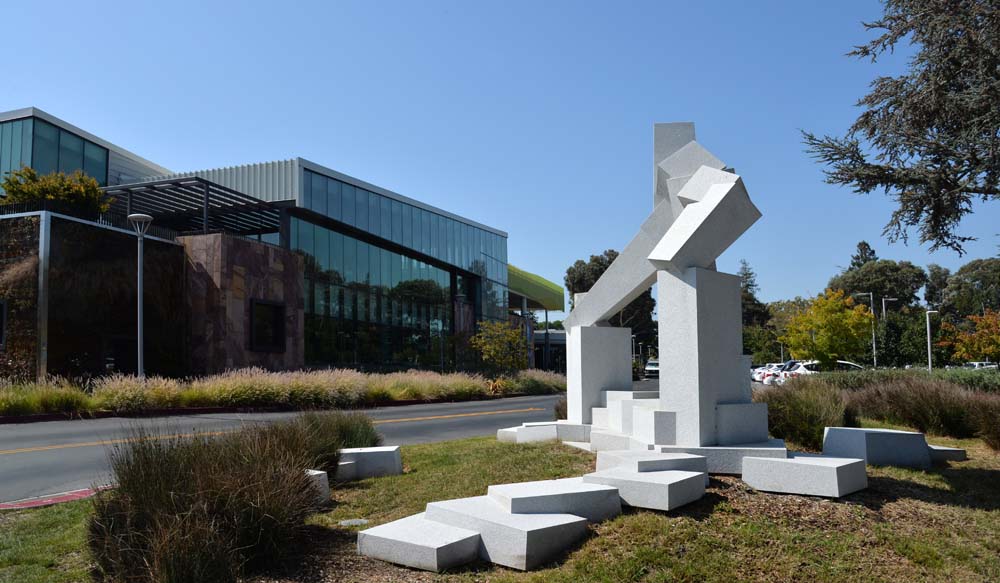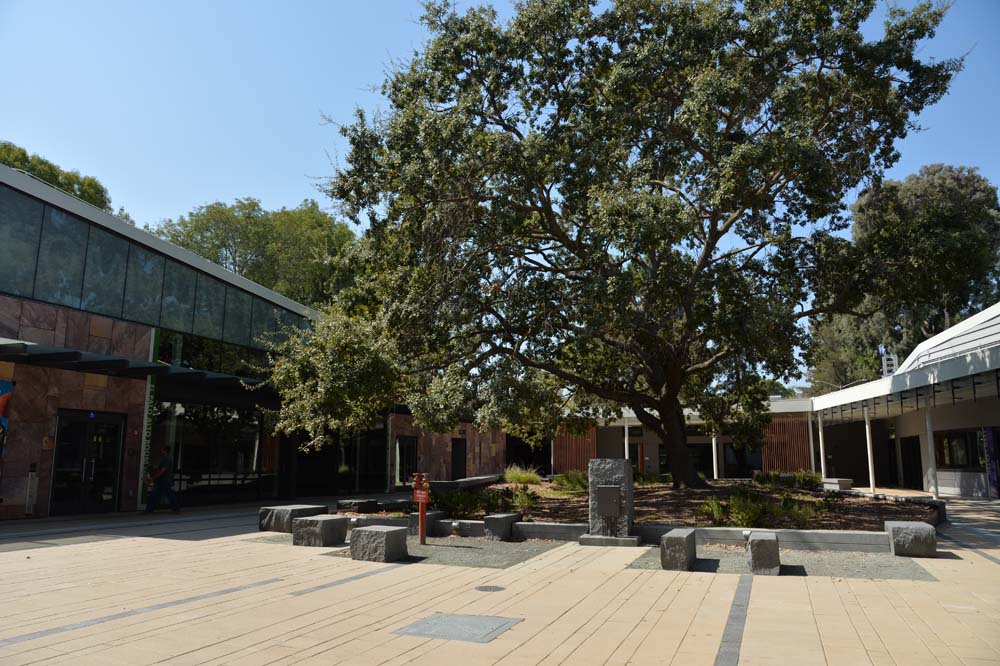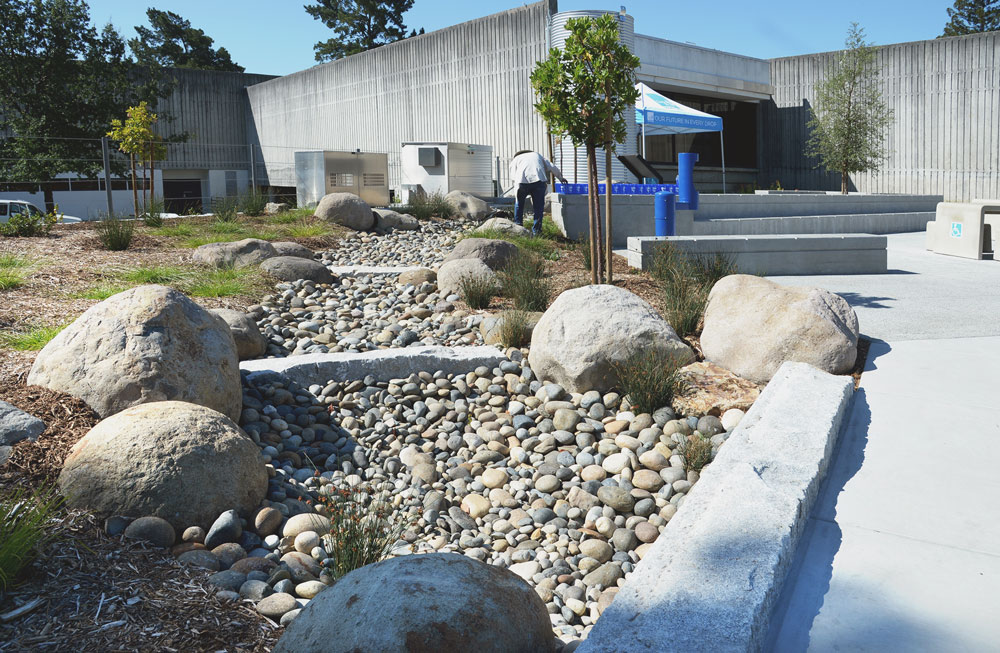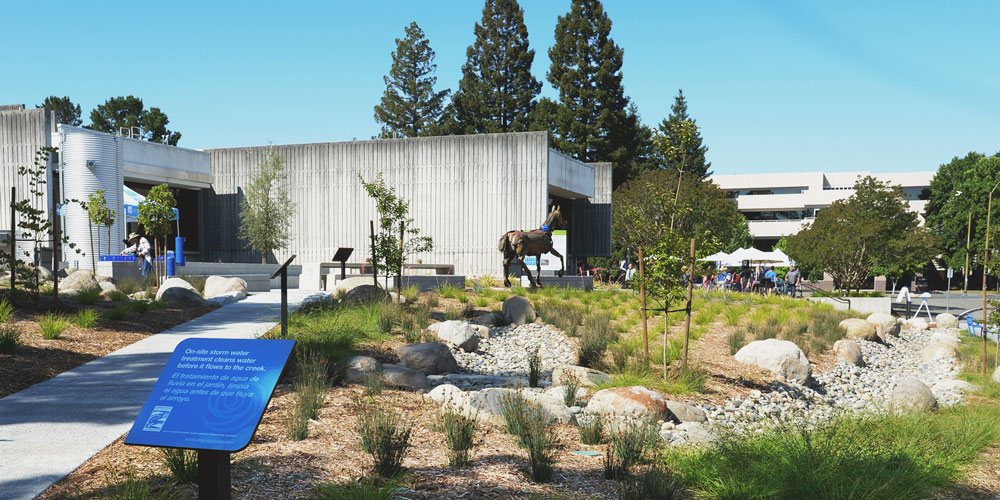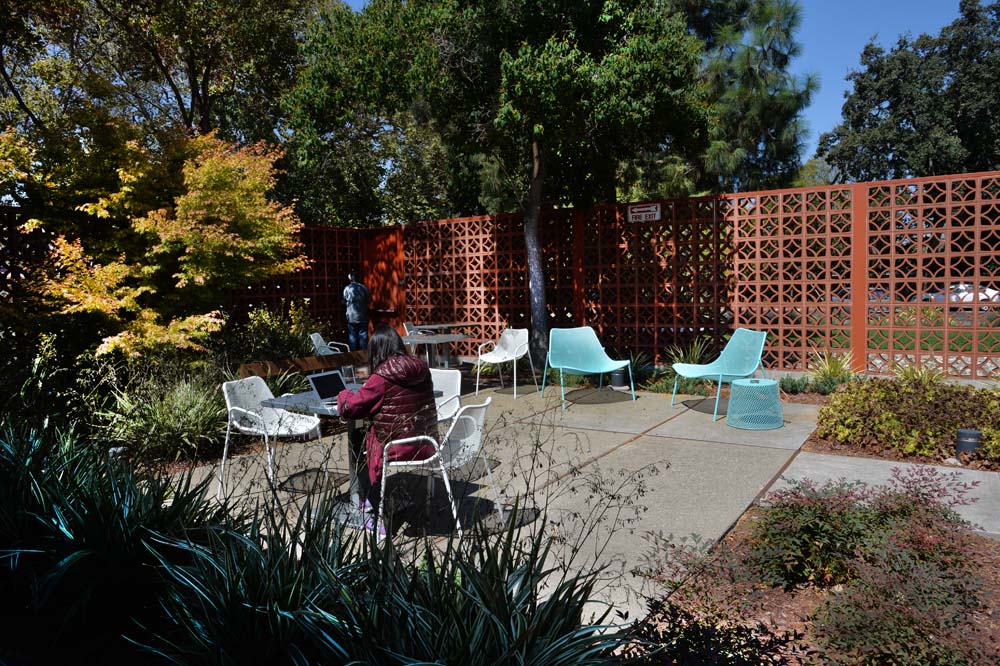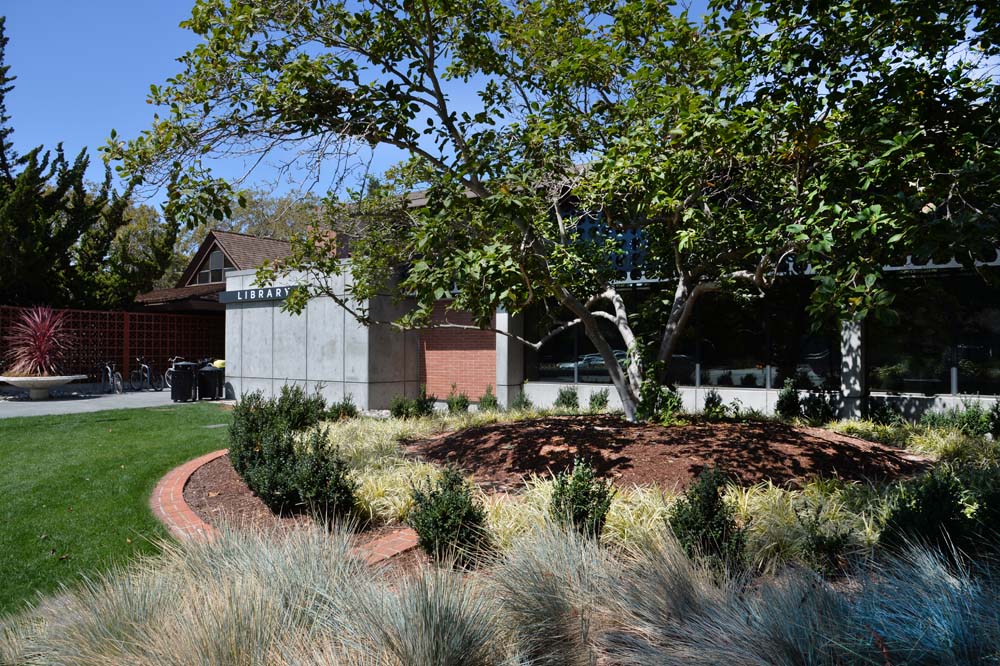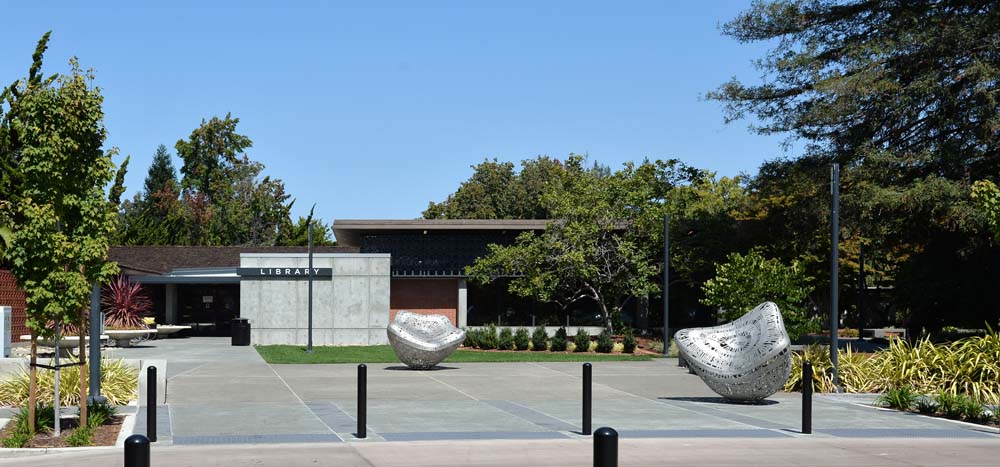LIBRARIES / MUNICIPAL BUILDINGS / COMMUNITY CENTERS
Libraries, public spaces, and local community centers can all too often be forgotten in this digital age. In our effort to get people outside, Gates and Associates partners with various cities, counties and state agencies in order to refresh or create all-new public spaces for the local communities to enjoy.
Mitchell Park Library
This renovated LEED Platinum certified library, promotes green living and strives to educate the community on the facility’s key sustainability features. Expanding the LEED goal from within the Library to the exterior space highlights Palo Alto’s commitment to both community and environmental sustainability.
The library grounds, originally built in 1958, now feature flexible spaces for community use and event staging, all while reducing potable water use by 40%. Pervious paving and biofiltration basins treat 100% of rainfall on-site, and 6,000 square-feet of photovoltaic (PV) solar panels create more than 15% of the facility’s energy. For an interactive look at more sustainable features of this project, visit the City of Palo Alto Website.
Santa Rosa City Hall Demonstration Garden
Gates worked with the City to replace lawn with Russian River-Friendly landscaping. Rainwater captured from the roof will is retained in a large tank that will is used to irrigate the gardens. Excess water will be directed through a bio-swale meant to slow runoff and give water time to seep into the ground, a process that allows the soil and plants to remove pollutants.
Other design features include a community gathering area that will also be used as an outdoor classroom and informational displays and interpretive signage throughout the site.
Rinconada Library
In an effort to further the City of Palo Alto’s sustainability goals, Gates and Associates’ landscape design surrounding the newly renovated LEED-NC Silver Library narrowed in on every environmentally friendly detail. The refresh of three courtyards were planned to update the image of the library and aid the needs of the community.
Gates conducted several public workshops during the design process to facilitate input from the community and cater to their use plan. Sustainability still in mind, biofiltration zones and swales were introduced in the existing lawn areas, and existing mature groves were preserved wherever possible.
